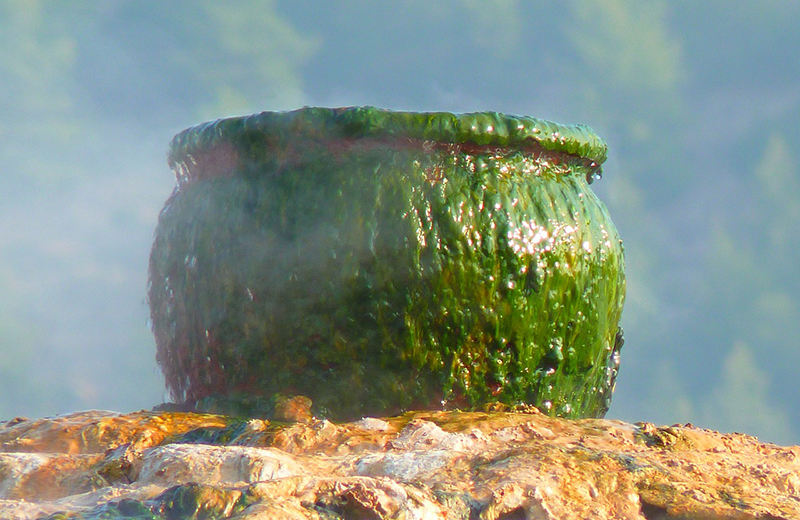What Are Hydrogenated Oils and Trans Fats?
Part 3 of 4
Let’s look at the elements involved to understand how hydrogenated oils and trans fats are created. We’ll see how they differ from the molecules our bodies are expecting from its fuel (healthy fats or “good fats”) :
- Fatty acids and
- Types of fat
Fatty Acids
Fatty acids are an essential part of lipids, the fat-soluble components of living cells. They are organic, as they contain both carbon and hydrogen molecules.
Fatty acids are acids produced when fats are broken down. Used for energy by most types of cells, fatty acids also help the body process cholesterol (both LDL and HDL cholesterol, in the proper ratio, are vital materials for our bodies to function properly).
More importantly, fatty acids help rid the arteries of cholesterol build up.
Another purpose of fatty acids is to assist the adrenal and thyroid glands, which may also help regulate weight.
Of the three different types of fatty acids, only Omega-9 is produced by the body. Omega-3 and Omega-6 are called “essential fatty acids,” or EFAs, because they must be consumed through our food, primarily certain types of fats and vegetable oils.
Types of Fat
Whether a fat is considered monounsaturated, polyunsaturated or saturated depends upon the configuration of the molecules.
The unsaturated fat molecule contains one or more double bonds between the carbon atoms. As the carbons are double-bonded to each other, there are fewer bonds connected to hydrogen. Since there are fewer hydrogen atoms, we call it unsaturated.
In chemistry, the terms cis and trans describe the relative orientation of functional groups within a molecule, in this case referring to the arrangement of the two hydrogen atoms bonded to the carbon atoms involved in a double bond.
In nature, fatty acids generally have “cis” rather than “trans” forms of unsaturation, although trace amounts of trans fats also occur naturally in meat and dairy products from ruminants (such as cows, goats, sheep and yaks).
Saturated Fats
Generally, saturated fats will stay solid at room temperature. These come from meat and other animal products and dairy (including milk, butter, cheese etc.) and eggs. From the plant kingdom, palm and coconut oils naturally produce saturated fatty acids, which many health advocates currently believe are healthy fats.
Polyunsaturated Fats
Polyunsatured fats come in two forms – Omega 3 fatty acids and Omega 6 fatty acids. Both are necessary but our modern diets tend to be out of balance, favoring the Omega 6.
Your body doesn’t make these essential fats so you must get them from food. Polyunsaturated fats stay liquid at both room temperature and cold or in the refrigerator.
Find good polyunsaturated fatty acids in healthful foods such as:
- Sunflower seeds
- Corn (only organic – non-GMO verified please!)
- Walnuts
- Brazil nuts (our personal favorite!)
- Flaxseeds
- Salmon, tuna, and other fatty fish
Monounsaturated Fats (MUFA)
Oils containing monounsaturated fats (MUFAs) stay liquid at room temperature but turn solid when refrigerated. Look for healthy MUFAs in real foods such as:
- Olives and olive oil (extra virgin cold-pressed please)
- Avocados
- Sunflower seeds, butter and oil
- Nuts such as almonds, hazelnuts, pecans
- Sesame oil
- Peanuts, peanut butter and oil
Hydrogenation
Hydrogenated oil is fat in which the essential fatty acids have been converted to a different form chemically. Both animal and vegetable fats can be hydrogenated. In general, the more solid the oil is, the more hydrogenated it is.
The process of hydrogenation adds hydrogen atoms to unsaturated fats, eliminating double bonds and making them into partially or completely saturated fats. However, the process of partial hydrogenation converts a part of cis-isomers into trans-unsaturated fats instead of hydrogenating them completely.
Hydrogenated oil is made by forcing hydrogen gas into oil at high pressure. Early on, manufacturers discovered that cooking oil at 350 degrees or more for about 5 hours turned it into something similar to plastic.
Today, vegetable oils are heated anywhere from 500 to 1,000 degrees under several atmospheres of pressure. Then a catalyst of hydrogenation (usually a metal such as nickel, platinum or aluminum) is injected. The oil increases in density and rearranges its molecules so that the oil becomes solid or semi-solid.
The finished product is one carbon atom away from plastic, and it behaves like plastic in your cells.
When hydrogenated oil is made, these formerly healthy fats are converted into a new type of fatty acid, known as hydrogenated and partially hydrogenated or trans fat.
What Is Trans Fat?
Trans fat is the term for unsaturated fat with trans-isomer fatty acids as opposed to the cis-isomer. While saturated fats can also be hydrogenated, “trans fats” can be monounsaturated or polyunsaturated, but never saturated. Trans-fats are partially hydrogenated.
Partially hydrogenated or trans fats are worse for your health than fully hydrogenated oils. Apparently their molecules are more like plastic.
In some partially hydrogenated oils like margarine, trans fats can make up almost half of the total fat content.
Good fats are healthful, with many important bodily functions. They produce energy, build cells, produce your hormones, protect your organs and help keep your body warm. We need a variety of healthy fats, including monounsaturated, polyunsaturated and saturated fatty acids.
Just remember – there is no safe level of trans fat.
Related Articles:
Trans Fat Part 1 – No Trans Fat
Trans Fat Part 2 – History Of Hydrogenation
Trans Fat Part 3 – What Are Trans Fats
Trans Fat Part 4 – Bad Trans Fat Destroys Your Health

[…] What Are Trans Fats? […]